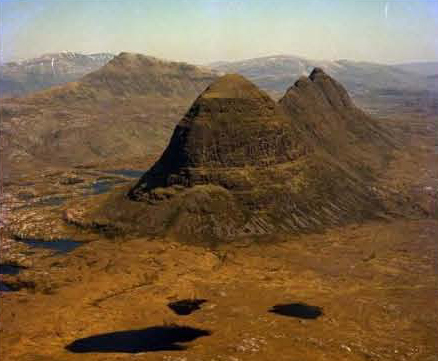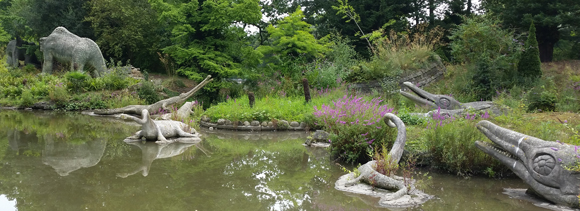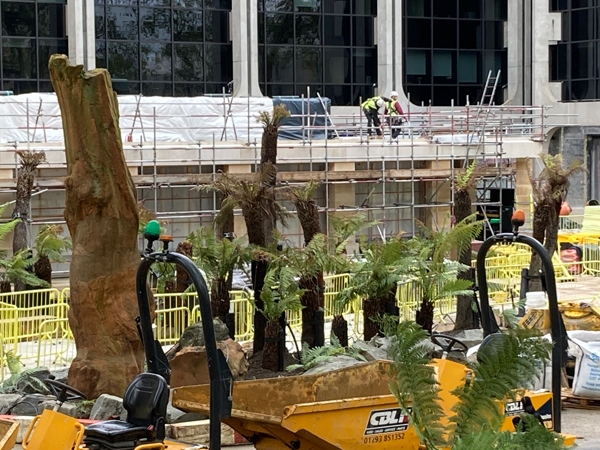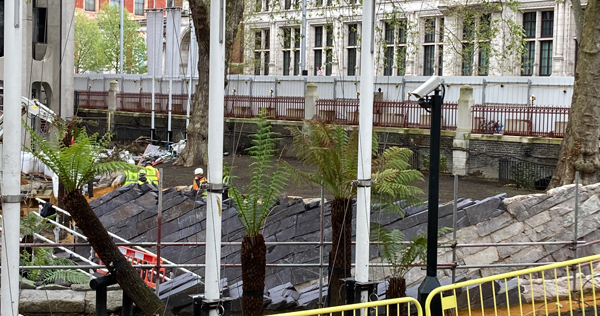An ancient rock formation spanning Scotland and Ireland might provide the best evidence of “snowball Earth”. A study led by University College London (UCL) has identified the Port Askaig Formation, as providing the most complete record of the transition of our planet from a temperate climate to a prolonged period of glaciation. This was a crucial moment in Earth’s history when the entire planet (probably), became covered in ice.
The paper, published in the “Journal of the Geological Society” of London, postulates that the Port Askaig Formation was likely laid down between 662 to 720 million years ago during the Sturtian glaciation. The formation is over a thousand metres thick and the Sturtian glaciation was the first of two global freezes thought to have triggered the development of complex, multicellular life.
One exposed outcrop of the formation, found on Scottish islands called the Garvellachs, is unique as it shows the transition into “snowball Earth” from a previously warm, tropical environment.

Transition into glaciation from right to left. Arriving on Garbh Eileach, the largest of the Garvellach islands. Sedimentary layers above the shoreline here record the transition into glaciation moving through time from right to left. Picture credit: Graham Shields.
Picture credit: Graham Shields
The Port Askaig Formation and “Snowball Earth”
Scientists think that the dramatic freezing of our planet was the catalyst that led to the development of more complex forms of life. This led to the evolution of the Ediacaran fauna and eventually to the development of more familiar lifeforms as demonstrated by the “Cambrian explosion” as recorded in such famous fossil sites as the Burgess Shale.
Senior author of the scientific paper, Professor Graham Shields (UCL) explained that other rock formations that are approximately the same age as the Port Askaig Formation are missing evidence of the change in climate.
The professor commented:
“These rocks record a time when Earth was covered in ice. All complex, multicellular life, such as animals, arose out of this deep freeze, with the first evidence in the fossil record appearing shortly after the planet thawed.”
PhD candidate Elias Rugen (UCL) and first author of the study stated:
“Our study provides the first conclusive age constraints for these Scottish and Irish rocks, confirming their global significance. The layers of rock exposed on the Garvellachs are globally unique. Underneath the rocks laid down during the unimaginable cold of the Sturtian glaciation are 70 metres of older carbonate rocks formed in tropical waters. These layers record a tropical marine environment with flourishing cyanobacterial life that gradually became cooler, marking the end of a billion years or so of a temperate climate on Earth. Most areas of the world are missing this remarkable transition because the ancient glaciers scraped and eroded away the rocks underneath, but in Scotland by some miracle the transition can be seen.”

A view of Garbh Eileach, the largest island in the Garvellach island chain where the gradational transition into snowball Earth is recorded. Picture credit: Graham Shields.
Picture credit: Graham Shields
The Sturtian Glaciation
The Cryogenian Period (from 720 to 635 million years ago) immediately preceded the Ediacaran Period, the first time that complex life is unambiguously identified in the fossil record. The Sturtian glaciation was the first of two global freezing events. The Sturtian glaciation lasted around sixty to seventy million years, and it was followed shortly afterwards by a second global glaciation event (Marinoan glaciation). During these phases life on Earth transitioned. Cyanobacteria became less prominent and algae began to become more common.

Layers of microbially-influenced limestone (stromatolite) that have been whipped up by storms. Such features are typical of tropical climes, in keeping with other evidence that Scotland was at low latitudes prior to the onset of glaciation. Picture credit: Graham Shields.
Picture credit: Graham Shields
The advance and retreat of the ice across the planet was thought to have happened relatively quickly, over thousands of years, because of the albedo effect – that is, the more ice there is, the more sunlight is reflected back into space, and vice versa. After these periods of intense cold, complex life emerged rapidly (in geological terms). It has been suggested that the extreme conditions on Earth may have prompted the emergence of altruism, with single-celled organisms learning to co-operate with each other, thus forming multicellular life.

Standing on limestone beds of the pre-glacial Garvellach Formation, looking North from Garbh Eileach over to Dun Chonnuil. Due to tectonic tilting, the sedimentary layers get younger, and closer to the onset of glaciation, as you move to the right. Picture credit: Elias Rugen.
Picture credit: Elias Rugen
The End of “Snowball Earth” was Catastrophic
The dramatic change in climate was catastrophic for life on Earth.
Professor Shields explained:
“The retreat of the ice would have been catastrophic. Life had been used to tens of millions of years of deep freeze. As soon as the world warmed up, all of life would have had to compete in an arms race to adapt. Whatever survived were the ancestors of all animals.”
For this new research, the field team collected samples of sandstone from the 1.1-kilometre-thick Port Askaig Formation and compared them to the older seventy-metre-thick underlying Garbh Eileach Formation. The team examined tiny, extremely durable minerals in the rock called zircons. These can be precisely dated as they contain the radioactive element uranium, which decays to lead at a steady rate. The zircons together with other geochemical evidence suggest the rocks were deposited between 662 and 720 million years ago.

Anthony (Tony) Spencer standing on the Garbh Eileach Formation. The rocks record a gradual transition from the warm tropical world of the Tonian period into the snowball Earth of the Cryogenian period. Tony first recognised the significance of these rocks over 50 years ago during his PhD. Picture credit: Elias Rugen.
Picture credit: Elias Rugen
Defining the Time Constraints for the Cryogenian Period
The scientists propose that the new age constraints for the rocks may provide the evidence needed for the site to be declared as a marker for the start of the Cryogenian Period. This marker, known as a Global Boundary Stratotype Section and Point (GSSP), is sometimes referred to as a golden spike, as a gold spike is driven into the rock to mark the boundary. Scientists from the International Commission on Stratigraphy, a part of the International Union of Geological Sciences, visited the Garvellachs last month for a preliminary assessment to determine the significance of the geological formation.

An outcrop called “the Bubble” on Eileach an Naoimh (Holy Isle). It shows a huge white rock fragment, tens of metres across, which was originally part of the underlying rock sequence. The layering in the carbonate rock has been squeezed tightly under immense pressure and transported by thick ice sheets to its final resting as one of many different rock fragments within a moraine. Picture credit: Graham Shields.
Picture credit: Graham Shields
Everything Dinosaur acknowledges the assistance of a media release from the University College London in the compilation of this article.
The scientific paper: “Glacially influenced provenance and Sturtian affinity revealed by detrital zircon U–Pb ages from sandstones in the Port Askaig Formation, Dalradian Supergroup” by Elias J. Rugen, Guido Pastore, Pieter Vermeesch, Anthony M. Spencer, David Webster, Adam G. G. Smith, Andrew Carter, and Graham A. Shields published in the Journal of the Geological Society.
Visit the Everything Dinosaur website: Dinosaur Toys.

























